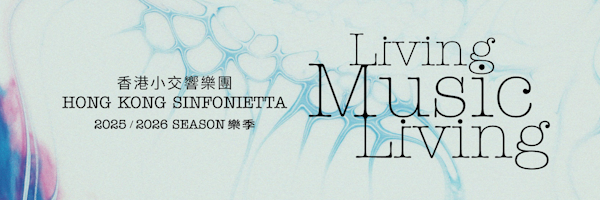Hong Kong, A More Diverse Cultural Hub
Hong Kong’s art scene has long been dominated by its film industry, and a lack of arts ecosystem and creative support venues. It is not the case anymore. In the last decade, Hong Kong became a more diverse cultural hub. The local cultural scene has seen an incredible boom with the establishment of cultural districts and new museums, the growing presence of local cultural spaces and international art galleries, the revitalisation of heritage landmarks, as well as the organisation of major exhibitions, fairs and festivals.
Hong Kong also became a burgeoning community of emerging homegrown talents, particularly resilient during the COVID pandemic. Culture is now a priority of the government, with, for the first time ever, a secretary dedicated to culture.
The number of galleries has remarkably increased. International art galleries have chosen the city as another art hub, in addition to Paris, New York or London. But most importantly, local art spaces have flourished, notably in the cutting-edge district of Wong Chuk Hang where art galleries have set up in old industrial buildings, like Gallery Exit, DE SARTHE or Blindspot, to name a few. The Hong Kong Arts Development Council even opened its new headquarters in the neighbourhood. Non-profit institutions such as Para Site or Asia Art Archive have also participated in the hatching of a more diverse art scene.
Two world-class museums have opened in the last two years, M+ and the Hong Kong Palace Museum. M+ welcomed more than 2 million visitors its first year, with its major exhibition of Yayoi Kusama or the Sigg collection. As for the Hong Kong Palace Museum, it attracted more than 1,5 million visitors in 2023 with its exhibitions of Chinese treasures, masterpieces from Botticelli and Van Gogh, or Cartier iconic pieces.
Both museums are building long–term partnerships with world’s top museums, which will allow the organisation of major exhibitions in collaboration with the Musée des Arts Décoratifs, the Musée national Picasso in Paris or the Tate in London, to name a few.
All this has been part of the development of West Kowloon Cultural District (to be renamed WestK), which also harbours Freespace for contemporary performances and Xiqu Centre for Chinese Opera. The Lyric Theatre, set to open in 2025, will be a world-class facility for drama, opera, music and dance performances.
In the last decade, several institutions have played a significant role in bringing diverse and sophisticated performances in town. Hong Kong Ballet, Hong Kong Philharmonic or Hong Kong Sinfonietta have attracted international masters as directors, conductors, musicians or performers.
The richness of the festivals also offers more cosmopolitanism, with numerous film festivals like Hong Kong International Film Festival, Hong Kong French Film Festival, the first ever Digital Art Fair in the world, art fairs and festivals such as Art Basel, Art Central, Hong Kong Arts Festival, French May Arts Festival or Clockenflap.
New fairs, festivals and cultural summits will also be launched in 2024 and 2025, like Hong Kong International Cultural Summit, ART021, PHOTOFAIRS or Hong Kong Performing Arts Expo.
The opening of Kai Tak Sports Park in 2025 and its stadium of 50,000 spectators will allow the holding of mega concerts and events. East Kowloon Cultural District, to open soon, will also serve as a hub for performances.
Another significant sign of the vitality of the city as an art pivot is the expansion of the leading international auction houses. Phillips recently moved into new Asia headquarters in West Kowloon Cultural District, Christie’s just opened its new Asia Pacific headquarters in The Henderson building designed by Zaha Hadid Architects, and Sotheby’s will move into a 24,000 sq ft space in Central.
Hong Kong has also successfully managed to revitalise certain cultural landmarks such as Tai Kwun, Central Market and PMQ, blending heritage, architecture, contemporary art and edgy performances.
Seeing the number and the diversity of events happening every day in the city, we realise that Hong Kong has nothing to envy to Seoul, Tokyo or Shanghai.
This feature has been published in its original form on HongKongEcho Magazine. Link here.







